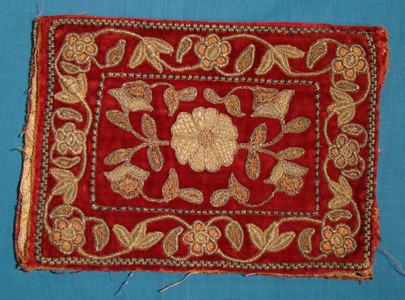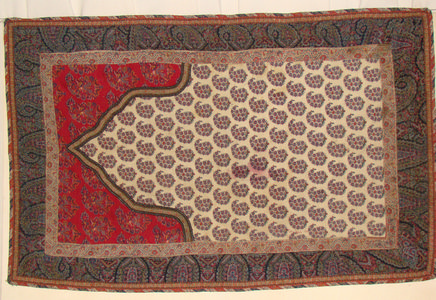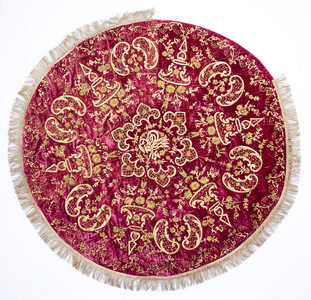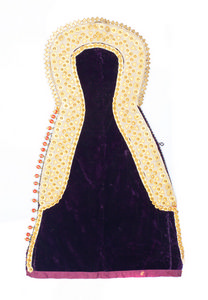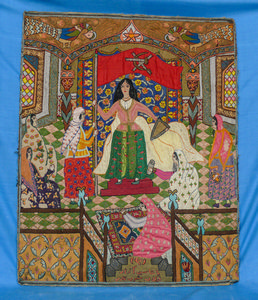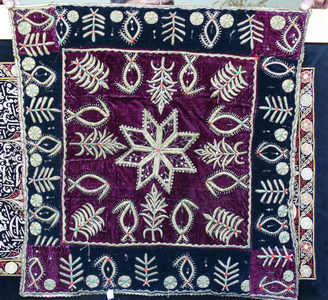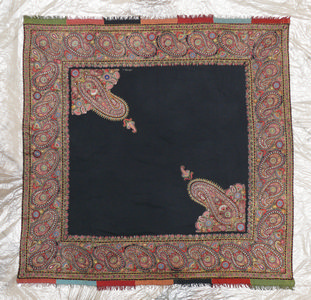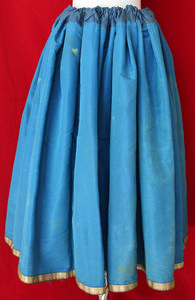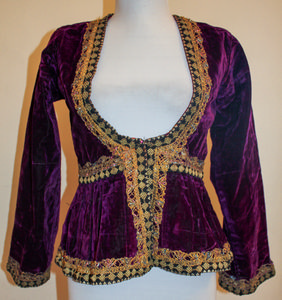Embroidery in Azerbaijan
Among more than 50 handmade crafts and arts, embroidery holds a special place in Azerbaijan. The fields of art, such as silkworm breeding, embroidery, meta-processing, played a key role in the development of the art of embroidery, providing this art with raw materials.
The embroidery remnants on the fabric samples preserved in the Archaeological Fund of our museum prove that Azerbaijanis have mastered the secrets of this art since ancient times. The embroidery patterns are made of silk thread on a leather fabric. These remnants of great historical and artistic significance, obtained from the Mingachevir archeological monument, are the oldest specimens found in the territory of Azerbaijan.
Another example of embroidery found in the XII century tomb of the in Nakhchivan, one of the historical cities of Azerbaijan, is very valuable in terms of its historical and artistic significance. The embroidery is made in a way known today as "qaytaq embroidery". Although this embroidery technology is currently preserved only in Dagestan, the fact that the oldest example of it was found in the territory of Azerbaijan shows that the people of these places have long been aware of its secrets. The method of re-embroidery in gulebat embroidery patterns was preserved until the middle of the XX century.
During the Middle Ages, the cities of Tabriz, Ardabil, Ganja, Shamakhi, and Barda in Azerbaijan were considered the main embroidery production centers. In the XVI century, the Safavid Shahs had special quarries in Tabriz. According to the information, in 1530, 20 of Shah Tahmasib's maids were taught to embroider gulebat in a special weaving quarry in Tabriz. Unparalleled examples of our embroidery art of the XVI-XVII centuries are in the Metropolitan, Victoria-Albert, Louvre, Hermitage, Topkapi Palace, and others. It is one of the valuable exhibits of dozens of famous museums and private collections.
Once upon a time, Azerbaijani embroidery was the beauty of international exhibitions. Giving information about one such exhibition, A.S. Piralov wrote: In the Caucasus section of the World Exhibition there were also embroideries of gulebat made of gold and silver wires. Among them is a very interesting atlas prayer sent from Shusha. In the late XIX and early XX centuries, in the developed cities of Azerbaijan, such as Baku, Shamakhi, Shusha, Ganja, Shaki, the traditional fields of embroidery were "gulabatin", "pilak", "munjug", "takalduz", "zaranduz", "gushgozu". "hamar", "doldurma" and other types of embroidery were widely used. At the same time, "malila", "gondarma", "shabakand" embroidery types began to spread.
Women who were excluded from fieldwork and public life spent their free time embroidering. Almost most of the used household chores were made by women. Embroidery and weaving were also used by girls for their dowry, and by mothers of grooms. Single embroidery, which is typical for the Shaki district, was usually made by men. In the process of developing commodity relations, the increase in market demand has created conditions for men to engage in other areas of embroidery.
The embroidery has always been in contact with shoemaking as well as art and crafts. Owners of the above-mentioned arts turned to bespoke embroiderers for the artistic design of slippers, long-sleeved boots, and saddle ornaments.
In some cases, several embroidery techniques were applied together, giving the product extreme beauty and luxury. In particular, the embroideries created from the joint synthesis of pilak-gulabatin-munjug, pilak-malila-munjug-gulabatin, hamar-gulabatin-pilak, pilak-gondarma-beads, gulabatin-kushgozu methods became more artistically perfect works of art.
Metal (gold, silver, copper) ropes were used as a material for embroidery, silk thread was used for single, filler, bird's eye, and smooth embroidery, and fabrics such as mahud, makhmar, ganovuz, tirma, atlas, gaz, satin were used in all types of embroidery.
Takalduz embroidery was performed mainly with silk thread on mahud fabric, and in some cases with gulabat threads on ganovuz fabric.
Various animal, human and floral images play a key role in Azerbaijani embroidery. Most of these images are very old in terms of time. Embroidered amulets on various household items are widely used to protect people from the evil eye and evil forces associated with their religious beliefs. The patterns observed in embroidery are very close to other fields of applied art, especially carpet patterns.
